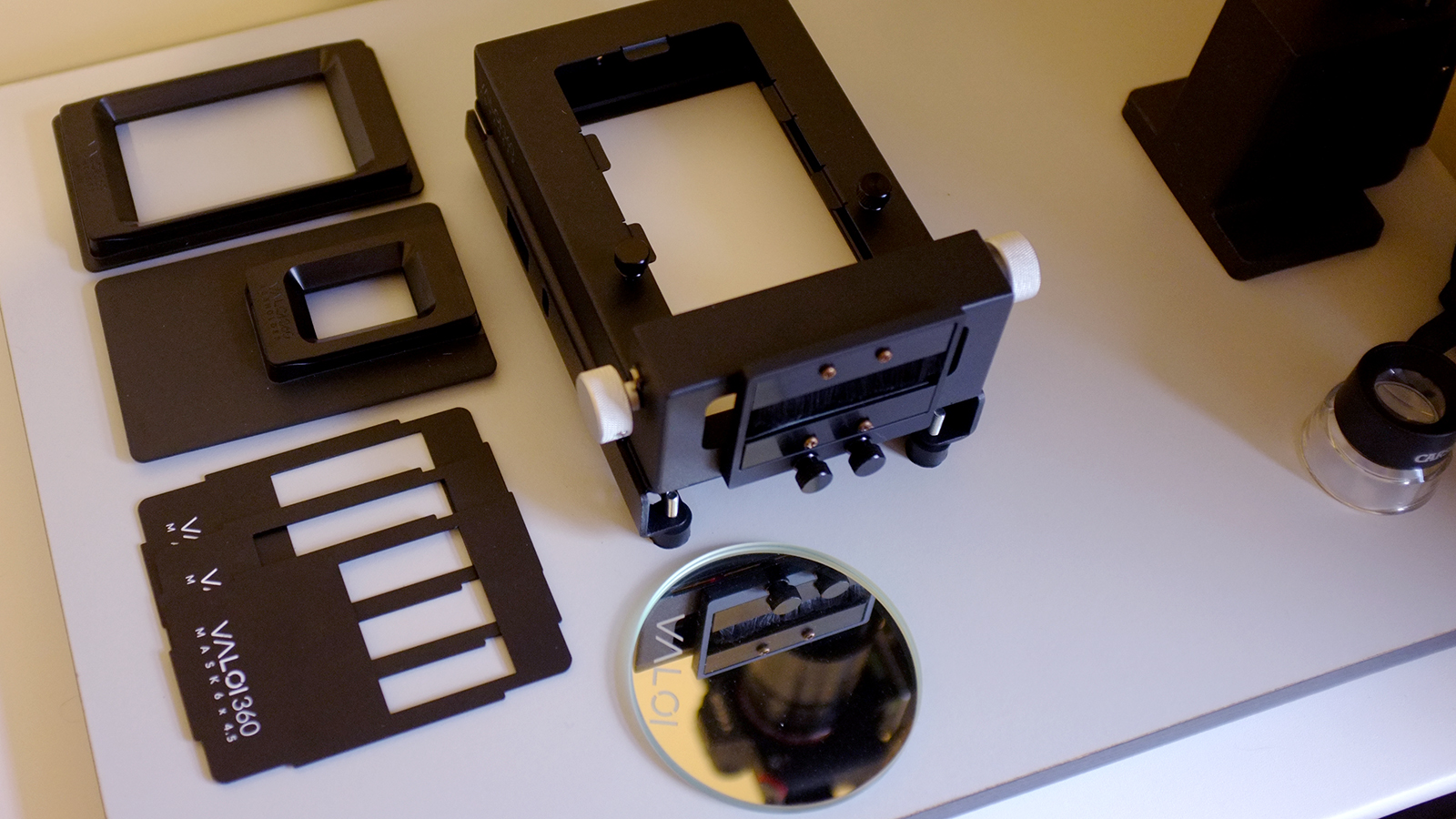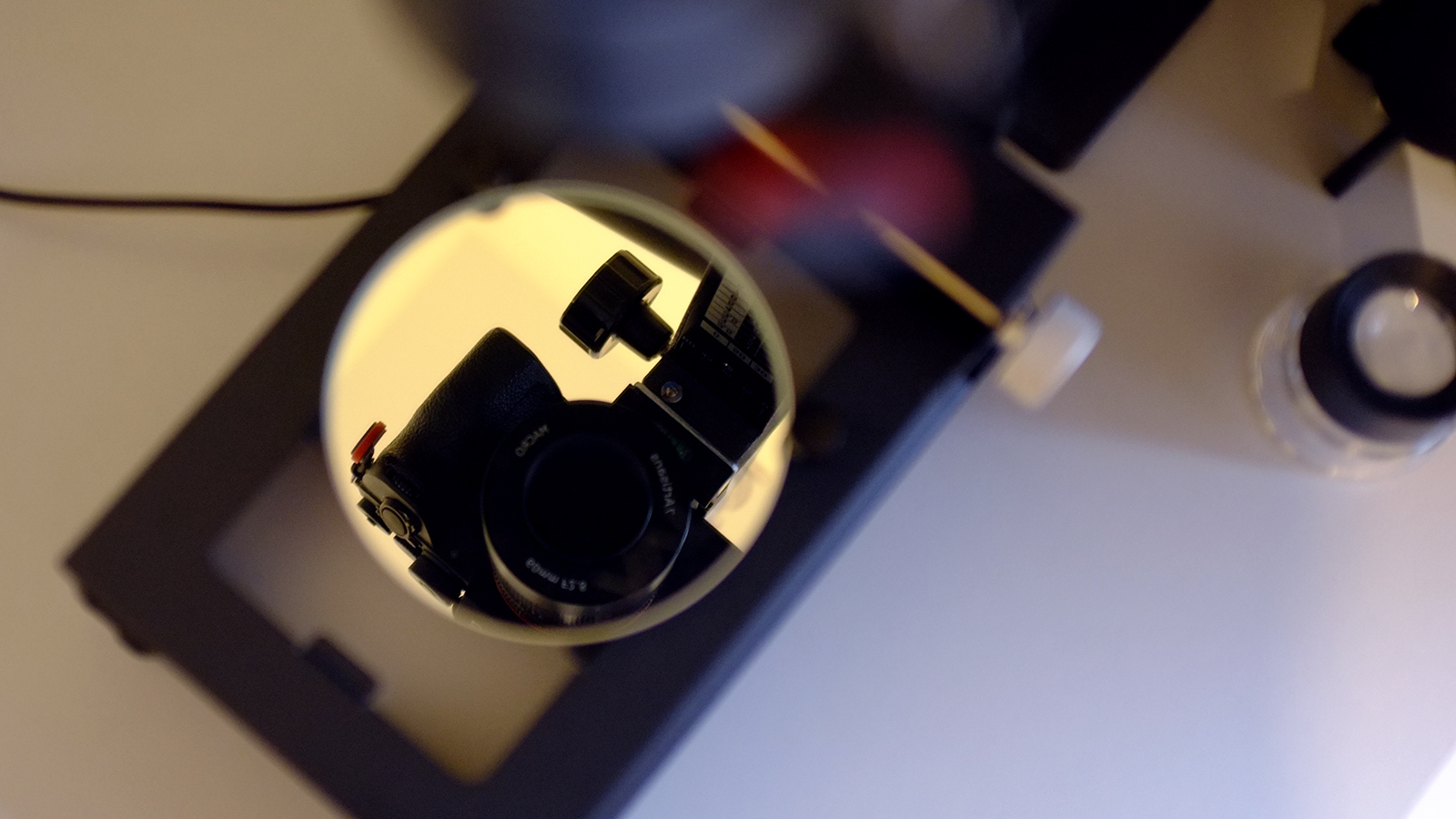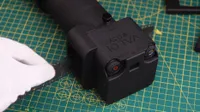Digital Camera World Verdict
If you regularly shoot film and like to be in full control of your scanning, whether you process your film or not, the Valoi 360 Professional is a fantastic kit. It’s well built, easy to operate, and provides consistently good performance.
Pros
- +
Solid build quality
- +
Comprehensive kit
- +
Makes film scanning easy
- +
Simple to setup
- +
Consistent scans
Cons
- -
Lots of packaging
Why you can trust Digital Camera World
The current resurgence of film, alongside the costs of sending film to be developed and/or scanned, has opened up the market for a growing number of home-developing and scanning solutions. Valoi has been around for a while, with a variety of tools on offer to aid in DIY camera scanning, where you essentially use a digital camera to photograph your negatives, for cataloguing, editing, and storing digitised versions.
While there are options at most price points, for many, the 360 range will be the one that is most attractive, as it offers a subset of products that cater to shooters using different formats. I’ve been using the 360 Professional System for a while now, using it for both 35mm and 120 negatives.
As a note about my setup, I’m using a Meopta geared copy stand with a Sony A7r4 and a couple of macro lenses to do the scanning. The 360 kit supplies everything else.
Valoi 360 Professional: Specifications
Frame advancing | Manual |
Light adapter | For Cinestill CS-Lite |
Film holders | 35mm and 120 |
120 masks | 6x6.45, 6x6 and 6x7 |
Lighting | Cinestill CS-Lite |
Valoi 360 Professional: Price
For around £380 / €380, the kit is reasonably priced, containing a bundle of parts, and you make a saving over buying individual components. Although in some markets, including the US, you might find it easier to buy the parts separately. Availability is pretty wide, with B&H a stockist in the US, and Kamerstore stocking the full Valoi range in the UK and Europe.
Valoi 360 Professional: Design & Handling
I’ll start by mentioning my only small gripe, and that is the packaging. It’s all great quality, nicely presented, and so on, but there’s a lot of it. I understand that for Valoi, just picking the individual parts and bundling them into a box makes sense; it would be preferable and probably more environmentally friendly to have the kits boxed up differently. As it came, I spent more time opening all the different packages than I did putting it all together.
That said, building out the kit was fun and straightforward, with excellent printed instructions.
The build of each component is very good. Once all the parts are in place, it is a very robust feeling piece of equipment, with excellent levels of fit and finish. I like that the CS-Lite can be installed either way round, with cutouts in the light adapter to aid this, while keeping everything locked in place and looking neat.
The best camera deals, reviews, product advice, and unmissable photography news, direct to your inbox!
Kudos to Valoi for including spare rubber rings for the Advancer, too.
The build process is quick and easy. Mostly a case of fitting the two spindles and rubber O-rings into the advancer, adding the light adapter and light, feet, and duster, which is a simple case of screwing them in. Other elements are changed for different uses, so they aren’t attached permanently.
The kit is pretty comprehensive and includes everything you need for scanning film from 35mm up to 6x9 medium format. The light adapter mounts underneath the Advancer, which is the main component. The Duster, a must-have in my opinion, can be mounted to either end and is made of two brushes that the film passes between, preventing dust from being captured in the scan.
The whole thing sits on adjustable four rubber feet, making it easy to level, using the mirror to help.
Then there are a pair of film holders that slot onto the Advancer and are held in place by a pair of thumbscrews. The 120 film holder can be used as is for scanning 6x9 film, or used with one of the masks for other sizes of negative.
The Cinestill light is powered by USB, which I like as it gives the option to use a wall socket or a battery bank. There’s a controller built into the cable, allowing for cool, white, or warm output, as well as a power switch. I’d prefer the controller to be closer to the light as it hangs off my table, but that’s a tiny niggle.
Valoi 360 Professional: Performance
I’ve used flatbed and film scanners many times and, while they do offer some benefits, I find that camera scanning is somehow more satisfying. I think this must be a part of the film shooting mindset, where being more involved in the process delivers more fulfillment. No matter the reasoning, the Valoi 360 is an enjoyable hands-on process that doesn’t really take much more time. In fact, using a flatbed can be rather slow, and even a dedicated film scanner can be time-consuming. Using a camera in conjunction with the advancer turns out to be a really efficient method that is accurate and speedy.
The basic process is to ensure your film is level, using the mirror and your viewfinder/screen (or in my case, field monitor) to check that the Advancer reflects your camera’s lens back on itself. You should only need to do this once, but I’d advise doing a quick check now and then, just in case anything has shifted. My checks showed that swapping film holders made no difference in leveling.
Then, with a (ideally) gloved hand, you pass your film through the duster, into the film holder, and line up with your camera’s screen. Punch in to set and check focus (on the grain, not the image) and take your shot. The tolerances of the 360 are tight enough to keep everything in place, while not so close that it is difficult to feed through.
Now, at this point, you’ll realise that scanning a roll, before you cut it, makes most sense. Using the Advancer to pass the film through makes everything very fast. A quick turn of the knob, scan a frame, then repeat. You can get a whole film done in a couple of minutes, although I would recommend checking focus now and then to make sure the film is still level. I didn’t find any adjustments needed, but better to be safe than to cut your film for storage and find you need to rescan any frames.
The rubber rings on the Advancer have just the right amount of grip to smoothly feed the film through without any slippage. Keeping an eye on the monitor, I found it really easy to line up each frame between scans, and the duster did an admirable job of preventing excessive dust, although it wasn’t perfect. I don’t think that’s the fault of the Valoi, though. It’s the nature of the beast, and I keep an air blower nearby to aid in this, and still need to do a little cleanup in post.
I’ve scanned 35mm, 6x6, and 6.45 using the 360 with no hitches at all. It operates really smoothly, and I was surprised at how fast I could scan 36 exposures, while enjoying the process and getting great results. Although the whole build is of excellent quality, I have to say I think the heroes might be the rubber feet. It could be really easy to knock the entire setup and then have to line it up again, but they hold it firmly in place. Your mileage may differ, depending on the surface you work on, but I’d hazard a guess that pretty much any desk or worktop would be suited to this.
Lastly, a note about the Cinestill CS-Lite. This is a nicely diffused panel, with no variation in brightness across its surface. Better yet, it has three settings, cool, warm, and white, giving it a little extra flexibility. For my workflow, I prefer to use the white light for everything, saving adjustments for Negative Lab Pro.

Valoi 360 Professional: Verdict
For film enthusiasts looking to scan at home, I don’t think there’s a better solution than the Valoi 360 Professional, without spending huge sums on a drum scanner. Its solid build lends confidence, and its operation is smooth and simple. I highly recommend this to anybody looking to digitise their negatives.
Features | Being the top tier bundle this has all the features you need. 4.5 |
Design | Excellent design means the 360 is a doddle to use and looks neat too. 4.5 |
Performance | Makes film scanning simple and more importantly consistent. 4.5 |
Value | Not the smallest investment but worth every penny. 4.5 |
Overall | ★★★★½ |
Alternatives
The Valoi easy35 is another simple solution for camera scanning, with the whole setup simply screwing on the front of your macro lens.
Read the full Valoi easy35 review

Rob is Editor of ImagineFX magazine and also works as creative director for his own studio, Pariah Studios, producing 3D animation, film and VFX for a variety of clients.
He started his career as a photographer, slowing adding 3D, film and visual effects and film into his toolbag, working across TV, web and print, with clients ranging from Blackmagic Design and HMV to Games Workshop and Royal Mail.
When not on at his desk he can be found building and playing guitars or out in the wilderness with his dog.
You must confirm your public display name before commenting
Please logout and then login again, you will then be prompted to enter your display name.





